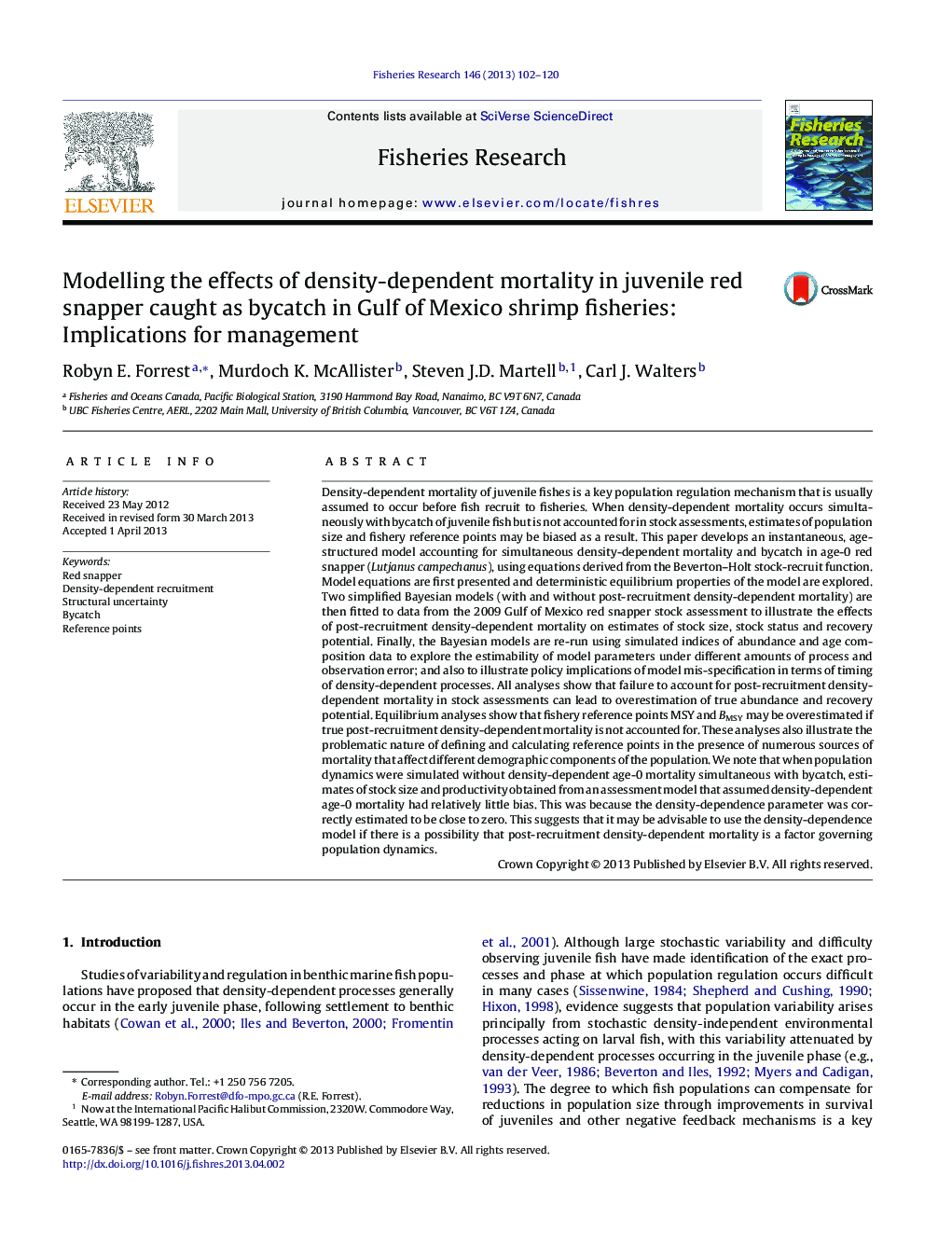| کد مقاله | کد نشریه | سال انتشار | مقاله انگلیسی | نسخه تمام متن |
|---|---|---|---|---|
| 4543149 | 1626822 | 2013 | 19 صفحه PDF | دانلود رایگان |

• Simultaneous density-dependent mortality and bycatch in age-0 red snapper is modelled.
• Not accounting for density-dependent mortality can lead to biased stock assessments.
• Bias in estimates of abundance and reference points are illustrated with simulation.
• The parameters for R0 and density-dependent age-0 mortality are highly confounded.
• Management Procedure Evaluation is suggested for dealing with this uncertainty.
Density-dependent mortality of juvenile fishes is a key population regulation mechanism that is usually assumed to occur before fish recruit to fisheries. When density-dependent mortality occurs simultaneously with bycatch of juvenile fish but is not accounted for in stock assessments, estimates of population size and fishery reference points may be biased as a result. This paper develops an instantaneous, age-structured model accounting for simultaneous density-dependent mortality and bycatch in age-0 red snapper (Lutjanus campechanus), using equations derived from the Beverton–Holt stock-recruit function. Model equations are first presented and deterministic equilibrium properties of the model are explored. Two simplified Bayesian models (with and without post-recruitment density-dependent mortality) are then fitted to data from the 2009 Gulf of Mexico red snapper stock assessment to illustrate the effects of post-recruitment density-dependent mortality on estimates of stock size, stock status and recovery potential. Finally, the Bayesian models are re-run using simulated indices of abundance and age composition data to explore the estimability of model parameters under different amounts of process and observation error; and also to illustrate policy implications of model mis-specification in terms of timing of density-dependent processes. All analyses show that failure to account for post-recruitment density-dependent mortality in stock assessments can lead to overestimation of true abundance and recovery potential. Equilibrium analyses show that fishery reference points MSY and BMSY may be overestimated if true post-recruitment density-dependent mortality is not accounted for. These analyses also illustrate the problematic nature of defining and calculating reference points in the presence of numerous sources of mortality that affect different demographic components of the population. We note that when population dynamics were simulated without density-dependent age-0 mortality simultaneous with bycatch, estimates of stock size and productivity obtained from an assessment model that assumed density-dependent age-0 mortality had relatively little bias. This was because the density-dependence parameter was correctly estimated to be close to zero. This suggests that it may be advisable to use the density-dependence model if there is a possibility that post-recruitment density-dependent mortality is a factor governing population dynamics.
Journal: Fisheries Research - Volume 146, September 2013, Pages 102–120